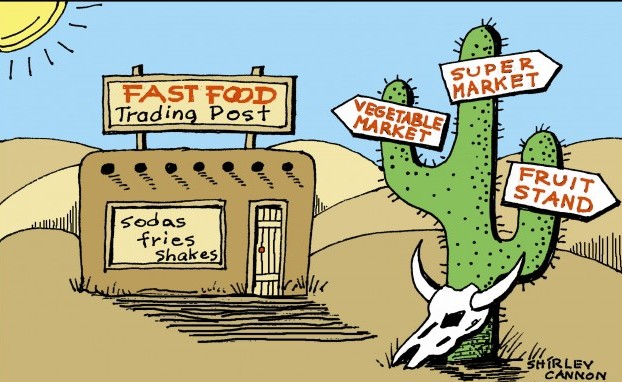A PLACE AT THE TABLE
America has its problems too. We hear this over and over again from those who know our country well. Why are we spending so many dollars overseas to help other nations when our own people are hungry and homeless or without a job? We also need help, and for some, charity begins at home.
Many of us have not wanted to look at some of the hard realities of what is going on in our own neighborhoods and in our own towns. For whatever reason, it is easier (or less painful) to focus on global issues only. We’ll spend countless number of hours and dollars supporting an important cause in Africa but walk past a desperate person on our own street and not even make eye contact. This is what is so frustrating for those who are trying to make a difference here at home.
If you are willing to spend less than 90 minutes and watch a documentary called A Place at the Table, you will be shown the “big picture” of what it is like to be hungry in America. It’s not the image that first comes to mind of a starving skin and bones body; if anything, it’s the exact opposite because almost all Americans have access to some sort of food. But it’s the type of food they can afford that makes some of the poorest people in America the most obese.
Anyone who has gone to a supermarket in recent years knows that good food (like fresh fruits and vegetables) is more expensive than processed food (like chips and donuts). But how many of us knew that since 1980, the price of good food has risen 40% while the price of processed food has gone down almost that same percentage? This is not necessarily because fewer people want to eat the healthy foods. or a natural disaster has wiped out certain crops. It’s because our government has chosen to subsidize the crops that are the most efficient to grow at the most affordable price. It’s the farmers who are growing corn, wheat and soybeans (in that order) that receive the most assistance, and it’s the net products those crops are contributing to that are the most unhealthy for us to be eating.
When you are poor, it only makes sense that you are going to buy the cheapest food you can find. Even if you buy only processed foods, chances are you are still going to fall short each month… and many at that point have to then rely on the charity of others. But most of these charities (who are always stretched to the limit and also struggling to make ends meet) also purchase processed foods. Pre-packaged snacks and ready-to-eat meals are the norm… anything that can be bought in volume at a low price and transported and prepared easily. Lots of sweeteners and preservatives are added, none of which have much nutritional value. So slowly over time, the poor become not only overweight but also malnourished. The heavier they get, the more inactive they become. It’s a vicious cycle, and no one knows what to do or how to help them.
Some of us blame the poor themselves. We look at how they spend the little money they have and criticize their choices. Or we say they don’t put their bodies first, or they don’t care for their children enough to make them a priority. But when there is very little money and everything in their life is a struggle, they need help. Giving them more food stamp assistance or welfare, however, isn’t necessarily the answer. Until they are educated and actually see the difference that better food and more exercise can make, they will continue to live the same life and repeat the same mistakes. A few hundred extra dollars in their pockets will not change anything.
If we can make healthier food more AFFORDABLE for the poor (either by government changing the crops they subsidize and/or setting up discounted “good food” programs), that would be a beginning. Then we need to start educating the children in the schools and implement programs for the adults showing them the importance of eating these foods and how and where to purchase them at the most affordable price. In the documentary, school children were introduced to what honeydew melon tasted like and were told what the benefits were. Most of these children had never tasted it before but raised their hand later and said they would try and get their parents to buy some for them.
But regardless of how much education we provide or how cheap we make good food, there will always be a certain percentage that will need an even greater incentive to make a positive change in their life. For those, we may have to actually PAY them to start eating properly, taking a multi-vitamin supplement and/or exercising. It sounds like an outrageous idea, but this is not a new one, and it’s proven to be cheaper for society in the long run as a preventative health measure.
America has its problems, but there are solutions out there.
Copyright © 2013 (Michelle Parsons, Getting Back on Your Path). All Rights Reserved.

